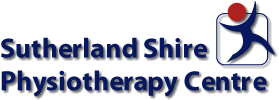Rotator Cuff Tears
With continued pinching and rubbing of the rotator cuff tendon as it passes through between the bones, it will start to fray and can eventually tear. Tears can also occur in a traumatic incident such as a fall.
Treatment
If your rotator cuff impingement injury is slow to respond or you have a lot of rotator cuff weakness then your physio may recommend that you have an ultrasound or MRI scan which will detect any tearing in the rotator cuff. If you have a tear in the rotator cuff tendon that is only small or is only through part of the thickness of the tendon then the treatment and the results are usually the same as for rotator cuff impingement.
However, if you have a tear that is through the full thickness of the tendon or a spur growing on your bone, then treatment may only give you a partial recovery. Surgery may be needed to repair the tendon and/or remove the spur.
Frozen Shoulder
A frozen shoulder occurs when adhesions form around your shoulder joint causing pain, loss of function and loss of movement in your shoulder. A frozen shoulder can occur if impingement syndrome and rotator cuff injuries are left untreated. In about 3% of people with shoulder injuries, a frozen shoulder will develop despite treatment. The reason for this is unknown, but it is more common in women, in people over 40 years and in those with diabetes. Frozen shoulder can also occur after surgery for breast cancer.
Treatment
The best treatment for frozen shoulder is prevention. In most cases frozen shoulder is preventable simply by keeping the shoulder moving and by seeking early treatment to resolve any shoulder problems before the shoulder joint can "freeze". However, in some people a frozen shoulder can develop despite following an appropriate exercise program.
Once a frozen shoulder develops it tends to run its own course and usually recovers spontaneously. However, recovery is slow and can take from 1 – 2 years. Physiotherapy treatment for frozen shoulder involves a gentle exercise programme aimed at maintaining available range of movement and strength, activity modification to prevent worsening of the condition and treatment to ease pain.
Fractures
Fractures of the humerus and clavicle (collar bone) are common and are usually the result of a fall.
Treatment
Fractures of the humerus are usually put in a sling for 6 weeks. Fractures of the clavicle are treated with a sling, or a figure '8' band across the back to keep the shoulders back and hold the fracture in the correct position. More severe fractures are often treated surgically. Physiotherapy can start as early as 1 week after the fracture and is aimed at preventing the formation of a frozen shoulder.
Dislocations
Dislocations of the shoulder joint are common in contact sports and sports requiring a lot of arm strength such as rock climbing and can also result from a fall.
Treatment
The shoulder should be relocated as soon as possible by a qualified doctor. Physiotherapy can start within a few days of the injury. Initially,the aim of physiotherapy treatment for the dislocated shoulder is to reduce pain and swelling. It is important to begin strengthening and stabilisation exercises as early as the pain allows, to restore the stability of the shoulder and help to prevent a recurrence.
At Sutherland Shire Physiotherapy Centre we have many years experience in the treatment of shoulder injuries. Call today to schedule an appointment with one of our physiotherapists.
Last updated: 1st August, 2020
Please note that the above information is of a general nature and is not intended to substitute for professional advice. You should always seek the advice of your qualified health practitioner to attain a proper diagnosis before starting any treatment regime.
[Return to Top] |
